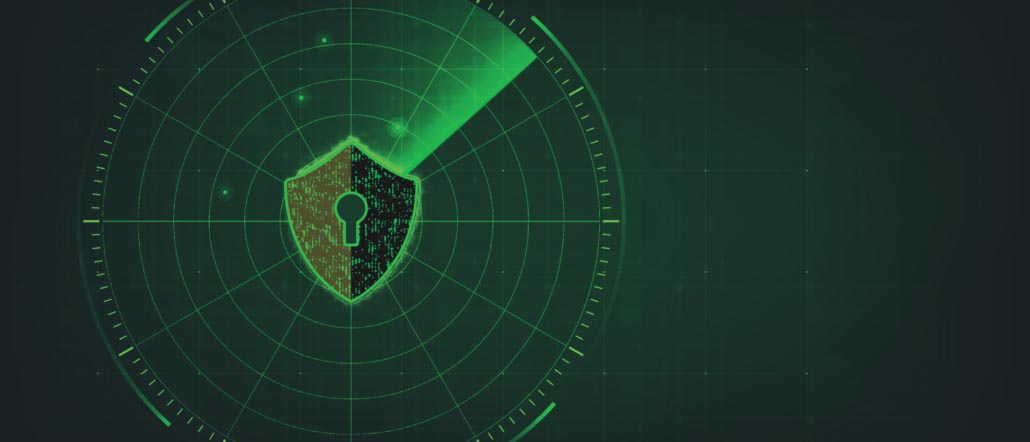Predictive Vulnerability Management with Greenbone

Project lead Jennifer Außendorf
Identifying tomorrow’s vulnerabilities today with Predictive Vulnerability Management: Together with international partners from across Europe, Greenbone’s cyber security experts are developing a novel cyber resilience platform that uses artificial intelligence and machine learning to detect vulnerabilities before they can be exploited, helping to prevent attacks.
Greenbone is strengthening its internal research in the field of “Predictive Vulnerability Management” and will additionally participate in publicly funded research and development projects in 2022. Currently, the security experts are working on a funding application for a European Union project. Until the first phase of the application submission is completed, Greenbone is involved within an international consortium and is working on a joint cyber resilience platform. The focus here is on preventing attacks in advance so that remedial action can be taken more quickly in an acute emergency. Methods for detecting anomalies by combining and analyzing a wide variety of sources from network monitoring and network analysis data will help to achieve this. The research area focuses on active defense against cyber attacks and includes penetration tests and their automation and improvement through machine learning.
In an interview, project manager Jennifer Außendorf explains what the term “Predictive Vulnerability Management” means.
Jennifer, what is cyber resilience all about? Predictive Vulnerability Management sounds so much like Minority Report, where the police unit “Precrime” hunted down criminals who would only commit crimes in the future.
Jennifer Außendorf: Predicting attacks is the only overlap, I think. The linchpin here is our Greenbone Cloud Service. It allows us to access very large amounts of data. We analyze it to enable prediction and remediation, providing both warnings for imminent threats and effective measures to address the vulnerabilities.
For example, we can also identify future threats earlier because we are constantly improving Predictive Vulnerability Management with machine learning. In the area of “Remediation”, we create a “reasoned action” capability for users: they are often overwhelmed by the number of vulnerabilities and find it difficult to assess which threats are acute and urgent based purely on CVSS scores.
One solution would be to provide a short list of the most critical current vulnerabilities – based on the results of artificial intelligence. This should consider even more influencing variables than the CVSS value, which tends to assess the technical severity. Such a solution should be user-friendly and accessible on a platform – of course strictly anonymized and GDPR-compliant.
Why is Greenbone going public with this now?
Jennifer Außendorf: On the one hand, this is an incredibly exciting topic for research, for which we provide the appropriate real-life data. The large amounts of data generated by the scans can be used in a variety of ways to protect customers. Figuring out what is possible with the data and how we can use that to add value for users and customers is a big challenge.
On the other hand, Greenbone wants to use the project to strengthen cyber security in the EU. For one thing, this is a hot topic right now: customers often end up with American companies when looking for cyber defenses, which usually doesn’t sit well with the GDPR. Greenbone has decided to launch a project consortium and will seek project funding in parallel.
Who will or should participate in the consortium?
Jennifer Außendorf: The consortium will consist of a handful of companies as the core of the group and will be complemented by research partners, technical partners for development and a user group of other partners and testers.
Because the project will take place at EU level, it is important for us to involve as many different member states as possible. We hope that the different backgrounds of the partners will generate creative ideas and approaches to solutions, from which the project can only benefit. This applies equally to the phase of building up the consortium.

Are there other players in the field of Predictive Vulnerability Management so far or has no one tried this yet?
Jennifer Außendorf: At the moment, we don’t see any competitors – Greenbone also deliberately wants to be an innovation driver here. Yes, the buzzwords “thought leadership”, “cloud repurpose” and “cyber resilience” are certainly floating around, but there is one thing that only we (and our customers) have: the anonymized data, which is essential for the research results, and above all the large amount of data that makes it possible to apply machine learning and other methods in connection with artificial intelligence in the first place – only we have that.
What is the current status there, what is on the roadmap?
Jennifer Außendorf: We are currently in the process of specifying the individual topics in more detail with the first research partners. They have many years of experience in cyber security and machine learning and provide very valuable input. We are also currently working on expanding the consortium and recruiting additional partners. Work on the actual application should start soon.
Our goal is to incorporate the results of the project directly into our products and thus make them available to our customers and users. Ultimately, they should benefit from the results and thus increase cyber resilience in their companies. That is the ultimate goal.



